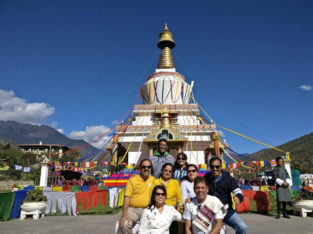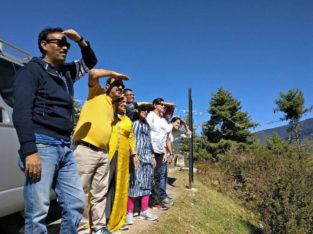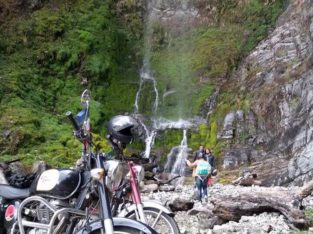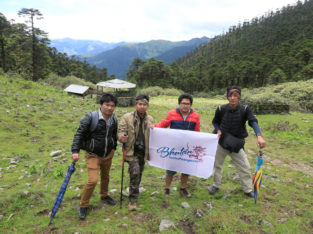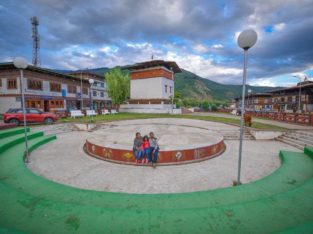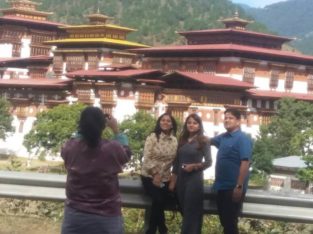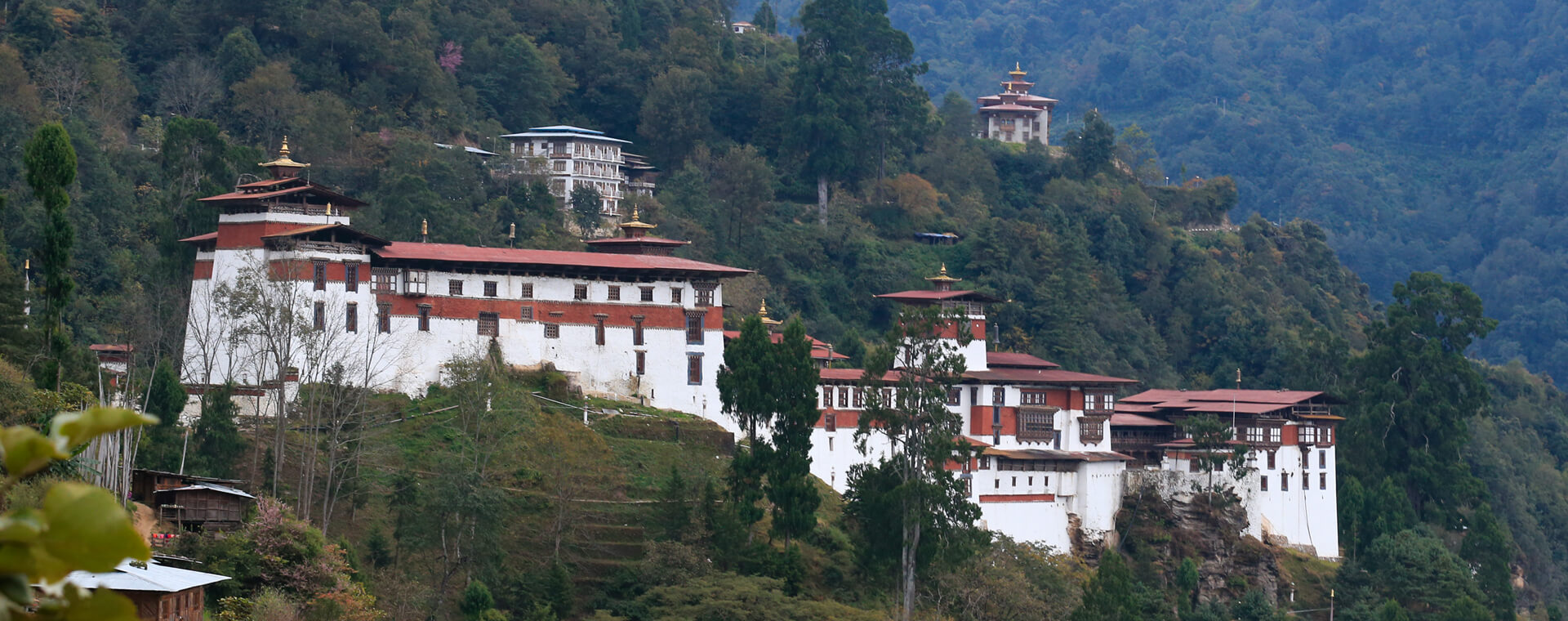TRONGSA – Crossroads of the Kingdom
This town is located in the center of Bhutan. Trongsa Dzong is the most impressive Dzong in Bhutan. It commands a superb view of Mangde river valley and now houses the state monastery and the headquarters of the Mangde District. Ta-Dzong (Watch Tower) that once guarded the Dzong from internal rebellion stands above the dzong providing visitors with insight into the historical importance of Trongsa in Bhutan’s history. The town’s vista is traditional in appearance as the wooden slatted houses line up together on the side of the hill. Trongsa forms the central hub of the nation and is historically the place from where attempts at unifying the country were launched. Both His Majesty King Ugyen Wangchuck, the Penlop of Trongsa, who was elected the country's first hereditary monarch and his successor, King Jigme Wangchuck, ruled the country from Trongsa ancient seat. The Crown Prince of Bhutan normally holds the position of the Trongsa Penlop prior to ascending the throne. including the present King. The entire landscape around Trongsa is spectacular.
Good to Know
At a Glance
Altitude
Place to See
Festivals and Events
Top Things to Do
Things to Know
Chendbji Chorten
Approximate four hours drive from Wangduephodrang is Chendbji Chorten, patterned on Swayambhunath temple in Kathmandu. It was built in 18th century by Lama Shida, from Tibet, to cover the remains of an evil spirit that was subdued at this spot.
Trongsa Dzong
Like almost all towns in the Kingdom, this Dzong architecture dominates the entire Trongsa horizon dwarfing the surrounding buildings. Built in 1648, it was the seat of power over central and eastern Bhutan. Both the first and second King ruled the country from this ancient seat.
Protected from invaders by an impenetrable valley, Trongsa Dzong is an impregnable fortress. The Dzong itself is a labyrinth of temples, corridors and offices holding court over the local community. It is built on many levels into the side of the hill and can be seen from every approach to Trongsa heralding its strength as a defensive stronghold.
Ta Dzong
The Ta Dzong, a cylindrical stone structure rising five storeys, was built in 1652 by Chogyal Minjur Tempa, a task entrusted to him by Zhabdrung Ngawang Namgyal. After more than 350 years, it has been resurrected into a classy museum, that represents a tasteful blend of tradition and modernity. There are 224 items on display including a sacred image of Sung Joenma Dorji Chang (self spoken Vajradharna), a bronze statue of Pema Lingpa, made by himself, and a number of centuries-old treasures like dance and ritual costumes and objects, ancient prayer books, paintings and scrolls, and textiles.
The Ta Dzong is a living museum and the main lhakhang in the Utse is dedicated to the Maitreya Buddha (Gyaltsab Jampa), also known as the Future Buddha). A Khesar Lhakhang is dedicated to Khesar of Ling. The tower has always been a place of retreat and there are hermits in practice, including two yogis, who are in life long meditation. The Ta Dzong is the only structure that has been restored specifically to tribute the Wangchuck dynasty as Bhutan celebrates the centenary of the Monarchy.
Excursion around Trongsa
Kuenga Rabten
The 23 km drive from Trongsa to Kuenga Rabten takes about an hour and passes through open countryside, high above a river gorge. The land slopes quite gently in this region, and farming is well developed, so there is much of interest to observe in the field and in the villages as one speeds along. Kuenga Rabten was the winter palace of the second King and is now looked after by the National Commission for Cultural Affairs. The building has a superb wood work and decorations. At present part of the palace is used as library. The top floor has an alter room with statues of Shakyamuni, Shabdrung and Guru Rimpoche. From the palace, one can take a hike up to the road and further along the village to a nunnery. The duration of the hike is about 25 minutes, with gradual ascent. There are about 80 nuns residing at the nunnery and one can visit their hostel, the main shrine and their dinning hall. This pleasant excursion from Trongsa offers further insights into the early days of Bhutan’s monarch.
Semji Village – Trongs
This ancient village is approx. 7km from Trongsa and ideal for bird watching. Weather permitting, hiking through the dense forest provide ample opportunity to see various species of birds. At Semji, one can visit the village and subsequently continue hiking downhill till the high way, where your transportation can shuttle you back to Trongsa town. The whole hiking trip takes approximately 4-5 hours.
Pictures from Happy Travellers

